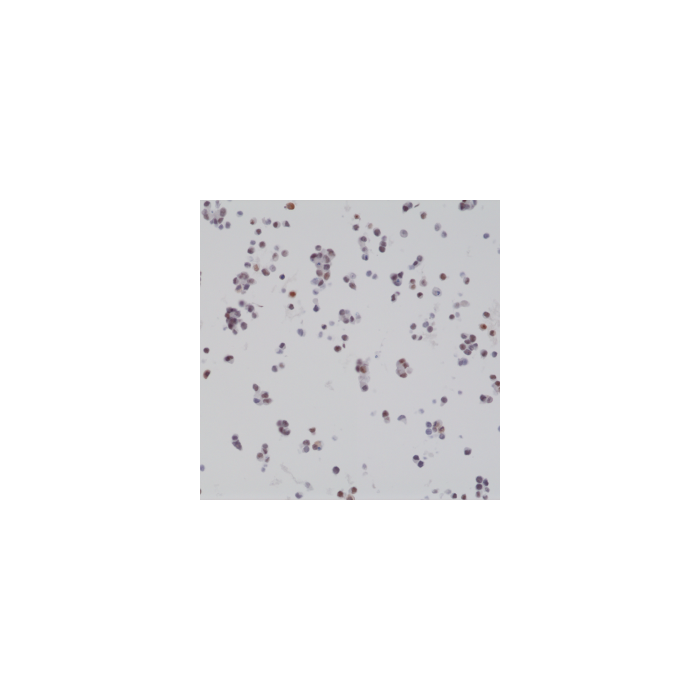Cookie Policy: This site uses cookies to improve your experience. You can find out more about our use of cookies in our Privacy Policy. By continuing to browse this site you agree to our use of cookies.
RevMab
anti-BAG-1L (human), Rabbit Monoclonal (RM310)

| Product Details | |
|---|---|
| Synonyms | Bcl-2-associated Athanogene 1; BAG Family Molecular Chaperone Regulator 1 |
| Product Type | Recombinant Antibody |
| Properties | |
| Clone | RM310 |
| Isotype | Rabbit IgG |
| Source/Host | Rabbit |
| Immunogen/Antigen | A peptide corresponding to residues near the N-terminus of human BAG-1L. |
| Application |
Immunohistochemistry (IHC): 1:500-1:2000 dilution |
| Crossreactivity | Human |
| Specificity |
This antibody reacts to human BAG-1L. It does not cross react to BAG-1M or BAG-1S. |
| Purity | Protein A purified. |
| Purity Detail | Protein A affinity purified from an animal origin-free culture supernatant. |
| Concentration | N/A |
| Formulation | Liquid. 50% Glycerol/PBS with 1% BSA and 0.09% sodium azide. |
| Isotype Negative Control | |
| Other Product Data |
Click here for Original Manufacturer Product Datasheet |
| Accession Number | Q99933 |
| Declaration | Manufactured by RevMab Biosciences. |
| Shipping and Handling | |
| Shipping | BLUE ICE |
| Long Term Storage | -20°C |
| Handling Advice | Avoid freeze/thaw cycles. |
| Use/Stability | Stable for at least 1 year after receipt when stored at -20°C. |
| Documents | |
| Product Specification Sheet | |
| Datasheet |
 Download PDF Download PDF |
BAG-1L belongs to a family of evolutionary conserved proteins, containing an approximately 110 amino acid sequence termed the BAG domain that defines the protein family. BAG1 was identified in a screen of interacting proteins of the anti-apoptotic protein BCL2. BAG1 shares no significant homology with BCL2 or other BCL2 family proteins, which can form homo- and heterodimers. However, coexpression of BAG1 and BCL2 provided markedly increased protection from cell death induced by several stimuli. BAG1 itself is made up of different isoforms translated from a single mRNA by alternative translational initiation, resulting in similar carboxy-terminal sequences but different N-terminal sequences. In humans, there are four BAG1 isoforms (BAG1L, 1M, 1 and 1S). The multiple protein isoforms interact with diverse partners, including chaperones Hsc70/Hsp70, Ser/Thr kinase Raf-1 and Bcl-2, to promote cancer cell survival. The BAG-1L isoform specifically binds to and increases the transcriptional activity of oestrogen receptor in cells, and in some, but not all studies, BAG-1 expression is predictive of clinical outcome in breast cancer.





